Are you baffled by the different axle options available for mountain bikes? Our guide below explains the common types of mountain bike thru-axles, as well as traditional quick-release axles.
Like many bike-related things, axle standards seem to be subject to continual change, with new ones emerging, gaining traction, then sometimes falling by the wayside as tech trends move on.
The main reason for this with mountain bike axles is the drive to build more robust wheels. A wider axle means the flanges on each side of the hub can be set further apart, increasing their bracing angle and, hence, the wheel’s strength.

For the rear wheel, working in the opposite direction is the need to keep a reasonably small Q-Factor, so the pedals aren’t too far apart, because this lowers pedalling efficiency and ground clearance.
The chainline needs to be engineered to run efficiently too, which means moving the chainset and cassette ever further outboard as axle width increases. Plus the chainstays need to be splayed out more to fit a wider axle, which increases the risk of heel strike as you turn the pedals.
For mid-range and higher-spec XC, trail and enduro bikes, thru-axles with Boost spacing are now the norm.
But you can still find lower-priced MTBs running on quick-release hubs or non-Boost thru-axles.
Super Boost is the latest thing and downhill bikes use wider spacing too. Meanwhile, Cannondale has its Ai system, which addresses the same problem in a different way.
On top of that, gravel and road bike axle standards are different again.
Let’s have a quick rundown of the options.
Table of common mountain bike axle standards
| Name | Front axle (length × diameter) | Rear axle (length × diameter) |
|---|---|---|
| Quick-release | 100mm × 9mm | 135mm × 10mm |
| Non-Boost thru-axle | 100mm × 15/20mm | 142mm × 12mm |
| Boost thru-axle | 110mm × 15/20mm | 148 × 12mm |
| Superboost thru-axle | 110mm × 15/20mm | 157mm × 12mm |
Quick-release skewers
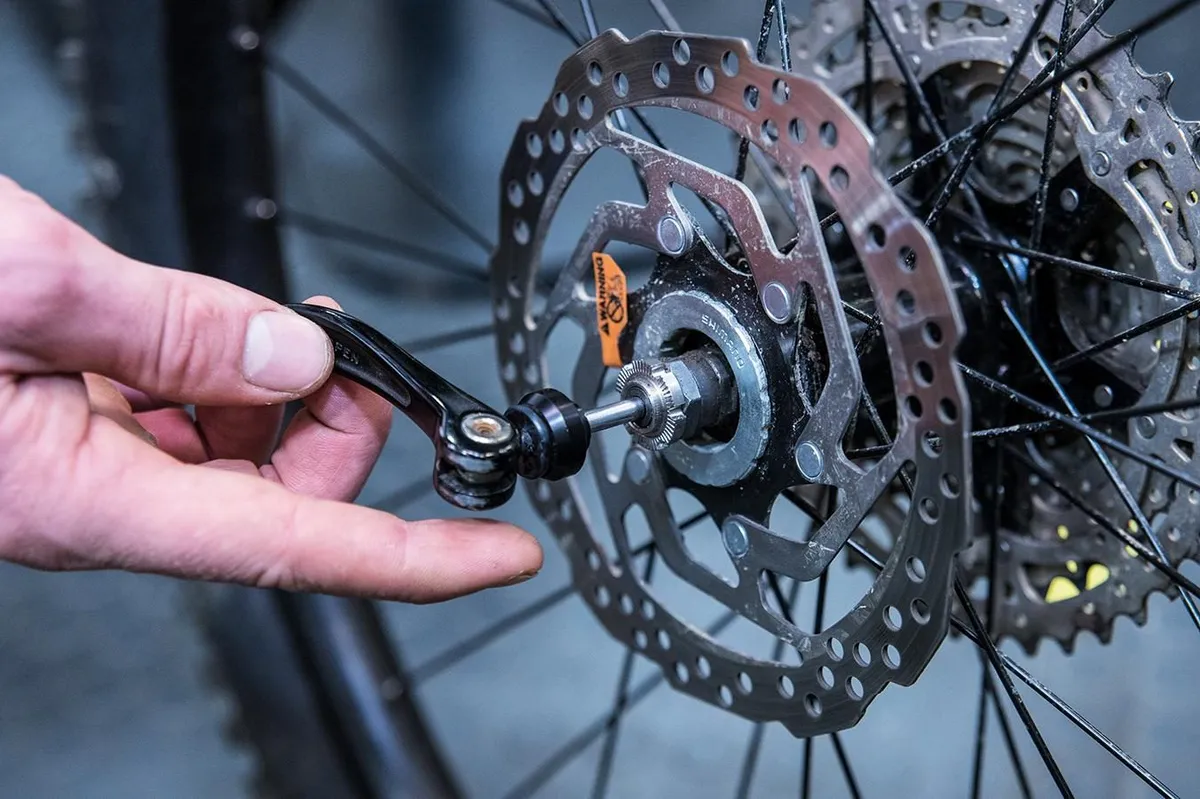
Traditionally, frames and forks had slotted dropouts, which are open at the ends.
Quick-release axles are hollow tubes that slot into the dropouts. The front wheel is 9mm in diameter and 100mm wide. The rear wheel is 10mm in diameter and 135mm wide.
The axle is held in place by a 5mm-diameter quick-release skewer that slides through the hole in the axle. There’s a tightening nut at one end of the skewer and a cammed lever at the other that enables you to tighten the axle in the frame’s dropouts.
That means you can change a wheel rapidly, but there’s a small risk the wheel will come out of the dropouts, alignment of disc brake rotors in the frame can be imprecise and the system isn’t that rigid.
Thru-axles

Rather than an open dropout, bikes with thru-axles have a closed hole on each fork blade and at the rear dropout junctions. The thru-axle slots into the hole on one side and screws tight into threads on the other. Some thru-axles have a lever built in to tighten or undo them, while others need to be tightened with an Allen key.
A thru-axle leads to a much more secure connection between the wheel and the bike than a quick-release; there’s no chance of it slipping out under load and it’s more rigid.
However, things such as dropout design, thread pitch and the overall length of the axle differ between makes, even with the same axle spacing, so thru-axles are not always cross-compatible between brands.
There are also options that include an open dropout on one end, so you don't need to completely remove the thru-axle to release the wheel from the frame.
Front thru-axle standards
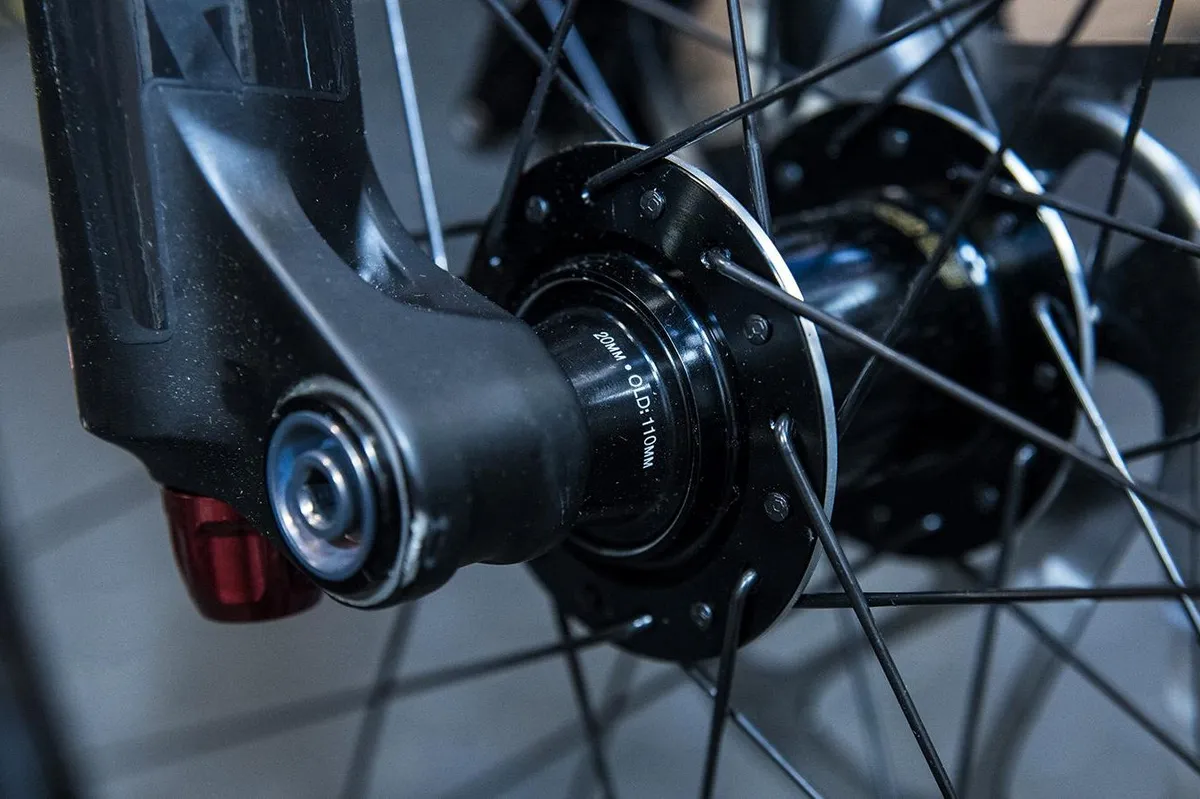
The standard size for thru-axle forks on mountain bikes used to be 15x100mm, with 20x110mm used mainly on downhill and freeride bikes.
For trail, XC and enduro bikes that’s now mostly changed to the newer Boost thru-axle standard, which increases the front axle length to 110mm.
Rear thru-axle standards

At first, 135x12mm was the most common size for thru-axle hubs at the rear, with 150mm used for downhill. But 142mm soon superseded these standards, with the extra 7mm enabling a stiffer interface with the frame.
Boost thru-axles
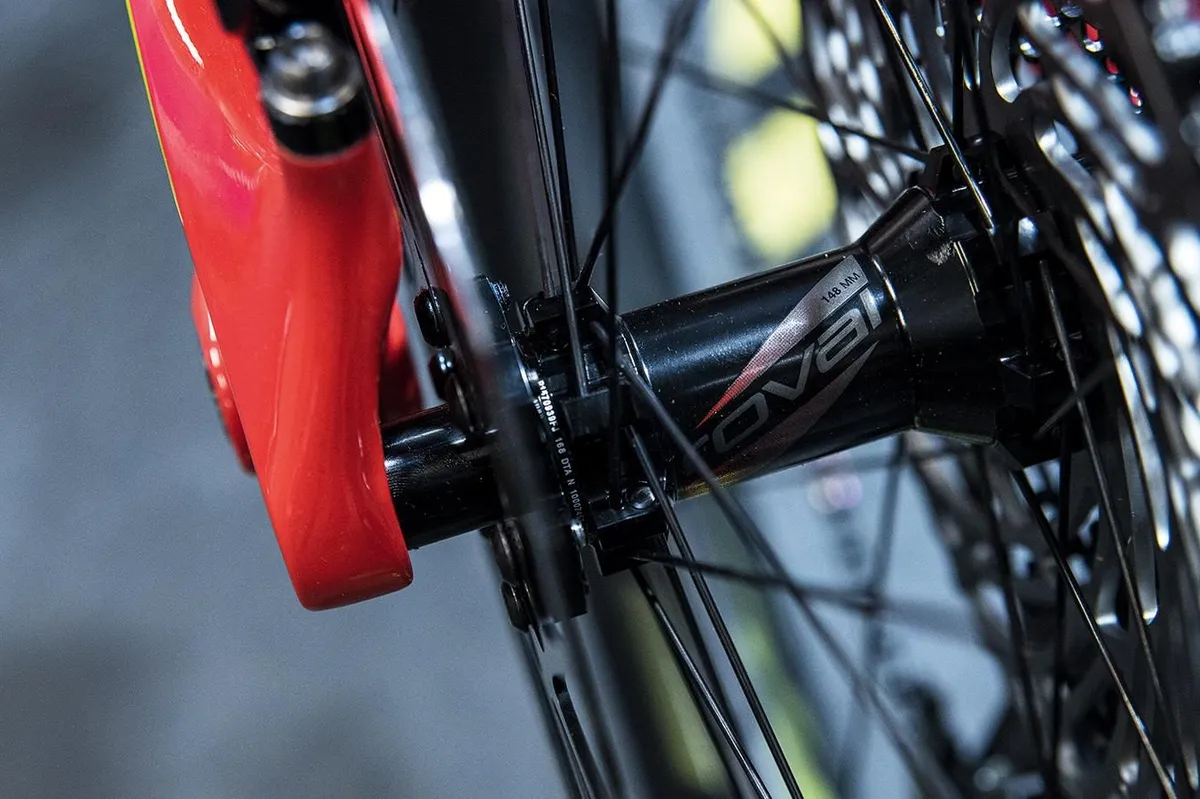
Boost hubs use 15x110mm front and 12x148mm rear spacing. This means the hub flanges can be set wider apart to increase the lateral stiffness of the wheel, but it makes Boost incompatible with all of the older standards.
It also places the chainline 3mm further outboard, which improves clearance between the tyre and chainring.
You’ll find Boost thru-axles on most modern mountain bikes.
Super-Boost thru-axles
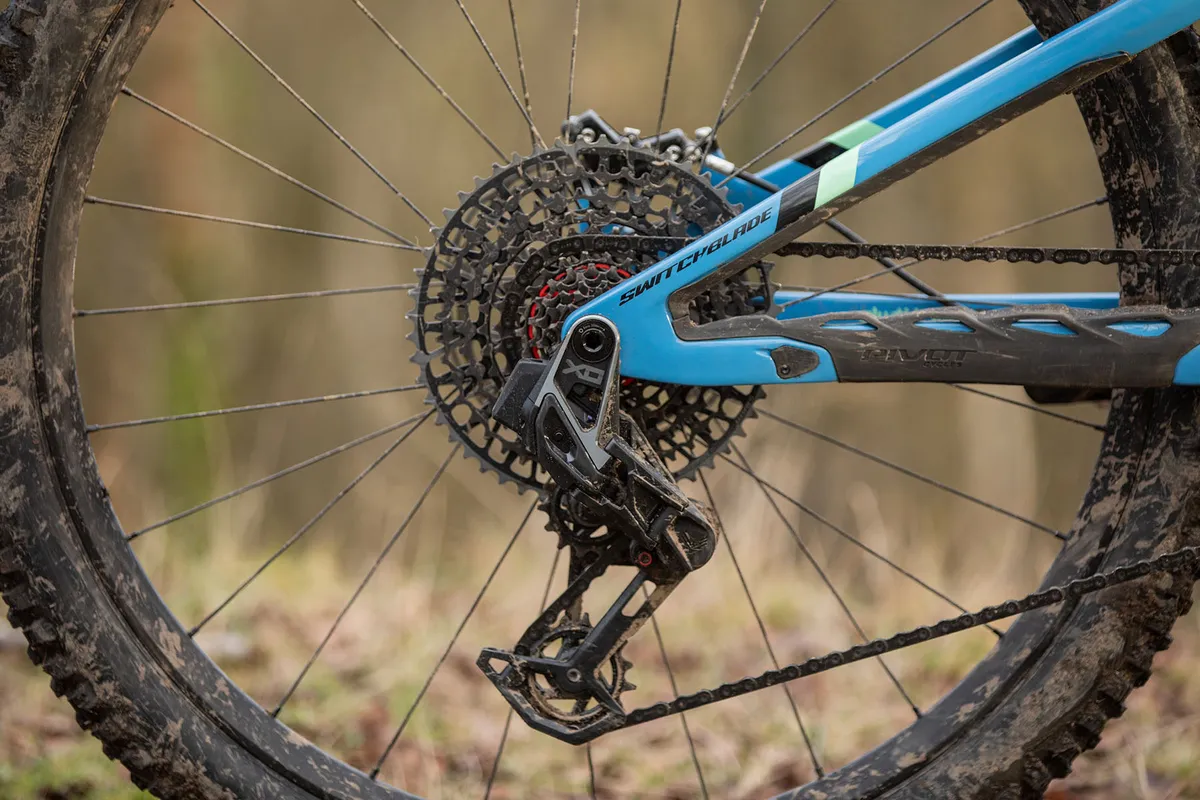
Super Boost goes one step wider at the rear, increasing the axle width to 157mm. The aim is again to increase rear-wheel bracing angles and rigidity, and Super Boost can also enable a frame to be designed with increased tyre clearance.
You can find a smattering of Super Boost wheels from many brands, but there’s a limited number of Super Boost bikes out there. They tend to be from smaller brands still, with Pivot being the first mainstream one to offer the standard.
157mm spacing is also the standard for the rear wheel on downhill bikes. However, the hub geometry is slightly different from Super Boost, with different brake rotor placement, so they’re not the same thing.
Cannondale Ai
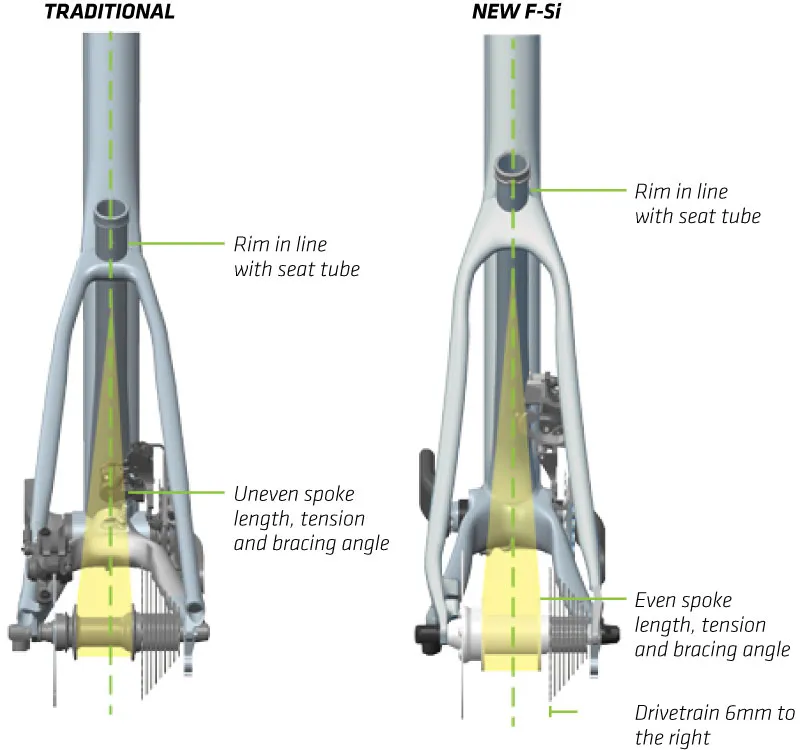
Although it has since moved away from the standard, some Cannondales featured the brand's Asymmetric Integration (or Ai), which shifts the drivetrain 6mm to the right to increase wheel rigidity and tyre clearance.
As such, Ai requires a specially dished rear wheel (where the rim is positioned in relation to the hub). Like Super Boost, that’s something that’s offered by some wheel brands, or you can get your wheel re-dished by a bike shop.
undefinedundefinedundefinedundefinedundefinedundefinedundefinedundefinedundefinedundefinedundefinedundefinedundefinedundefinedundefinedundefinedundefinedundefinedundefinedundefinedundefinedundefinedundefinedundefinedundefinedundefinedundefinedundefinedundefinedundefinedundefinedundefinedundefinedundefinedundefinedundefinedundefinedundefinedundefinedundefined